Braille is a tactile system of raised dots used by people who are blind or have low vision to read with their fingers.
Braille is not a different language.
It is a code like the Secret Code or Crack the Code worksheets we have all played as kids where a picture, or in this case braille cell, represents a letter or number. Braille can also represent punctuation signs and specific formatting like italics, and bold or underlined words.
The Unified English Braille (UEB) code is used in the United States and several other English-speaking countries. There are dozens of other braille codes for languages like Arabic, Thai, Chinese, Greek, and Russian.
1. History of Braille
2. Braille Basics
3. How to Write Braille Alphabet and Numbers
4. How to Delete Braille
5. Uncontracted vs. Contracted Braille
History of Braille
Charles Barbier
In the early 1800s an officer in Napoleon Bonaparte’s army, Charles Barbier, developed a tactile system of writing called “night writing” for soldiers to read in the dark to avoid enemy detection.
The complex system contained twelve dots in each braille cell. Each combination of dots represented a letter or phonetic sound.
The sharp point of a pocketknife was used to punch marks into paper in accordance with the dots of each column.
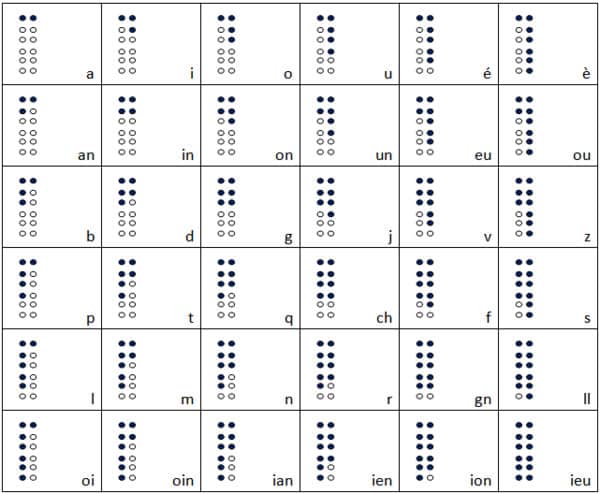
Barbier’s superiors regarded the system as too complex and impractical to use in the field.
In 1821, Barbier brought his system of night writing to the Royal Institute for Blind Youths in Paris, the first school for blind children in the world.
He had perfected his system using a stylus, instead of a knife, to punch dots and developed a metal plate to print embossed materials easier.
Barbier’s system had its limitations. The primarily phonetic system prevented precise spelling, and there were no punctuation symbols. The size of the cells and the multiple dots that had to be identified made reading a laborious process.
Louis Braille
A twelve-year-old student was introduced to Barbier’s night writing system and spent the next nine years simplifying and perfecting his own system.
The student was named Louis Braille. He was blinded by accident at a very young age and began attending the Royal Institute for Blind Youths when he was ten.
Louis took Barbier’s twelve dots and reduced it to six. This improvement allowed a fingertip to encompass the entire cell and move smoothly and quickly along a page.
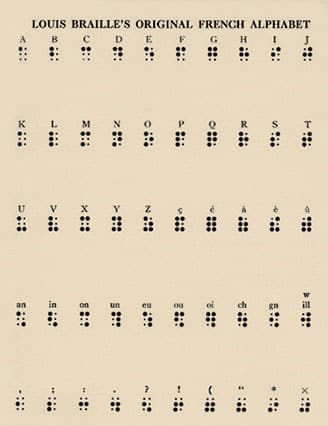
In 1829, Louis Braille published his first braille book.
In 1837, he developed a code for math and music.
Louis Braille’s home country of France adopted braille as its official communication system for blind individuals in 1854.
In 1860, Dr. Simon Pollak observed the braille system in use in Europe and brought it back to America. It was used at the Missouri School for the Blind in St. Louis.
For the next 80 years a feud known as “the war of the dots,” persisted between many forms of tactile communication systems. Schools across America were using different “official” systems.
Helen Keller
In 1909, Helen Keller wrote a letter to the Secretary of the New York Board of Education advocating for American Braille over New York Point.
Helen Keller learned to read all the various tactile systems and was frustrated one universal system wasn’t in place.
Several committees were formed to determine one uniform system to adopt for use in schools and general reading.
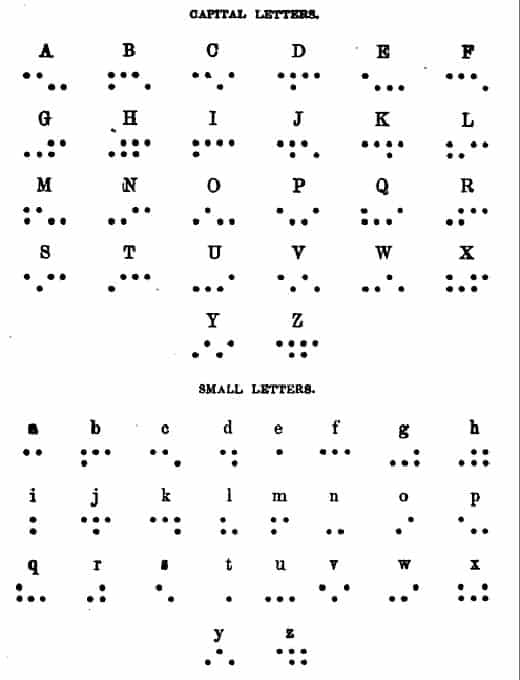
In 1932, a century after Louis Braille presented his code, the United States and Great Britain adopted Standard English Braille as the universal method for literary material.
Multiple codes continued to exist for mathematics, foreign language, and computer braille materials.
Unified English Braille
In 1991, leaders and braille experts began working on a unified code applied across various English-language materials (literary, math, science, computer code, foreign alphabets) to be used internationally in English-speaking countries.
After thirteen years of research and analysis, countries began adopting Unified English Braille.
- South Africa (2004)
- Nigeria (2005)
- Australia (2005)
- New Zealand (2005)
- Canada (2010)
- United Kingdom (2011)
- United States (2012)
Researchers have continued studying the impact of the new unified code.
Many braille readers have reported that the changes to the actual literary part of the code are minor. However, there is a lot of concern about that changes to math and science texts.
Braille Basics
Each braille symbol is made up in a space of six dots called a braille cell.
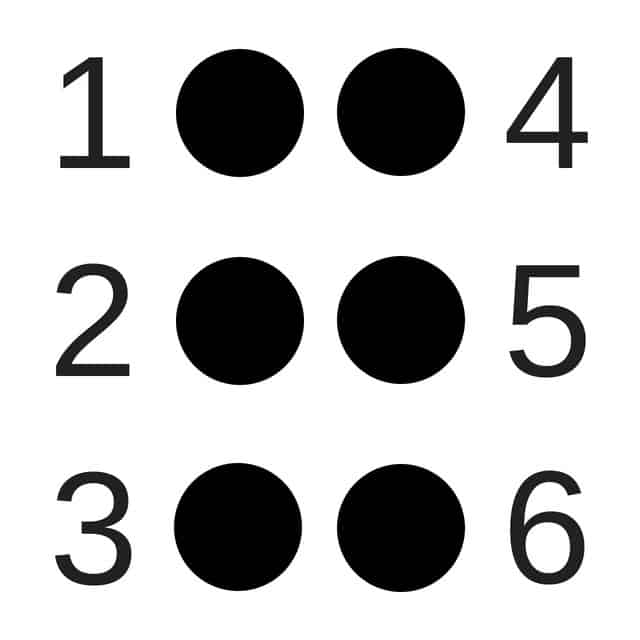
A full cell is made up of six raised dots in two parallel columns with three dots each.
Braille Alphabet and Numbers
There are 64 possible combinations of dots for a single braille cell. Each unique combination can stand for an individual letter, number, punctuation, or even a whole word.
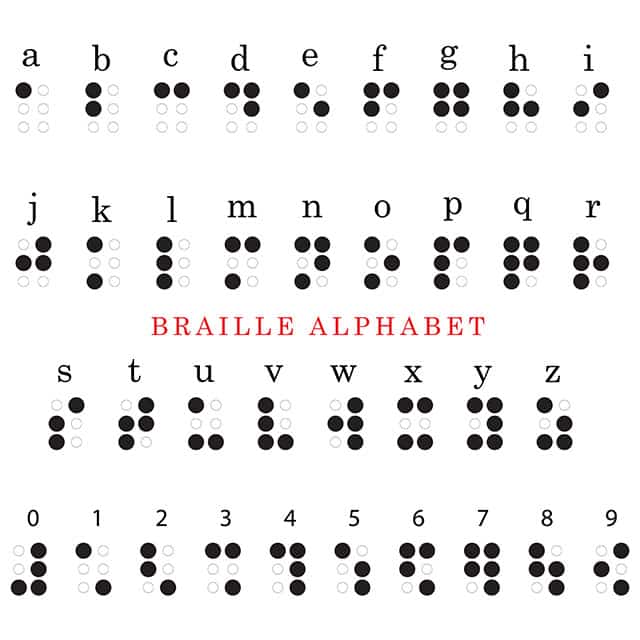
The bold dots represent the dots in the braille cell that are raised to form each letter.
The dot positions in the braille cell are represented by a number 1-6 as shown in the image above. The numbers correspond to the keys of a braille writer used to produce the embossed material.
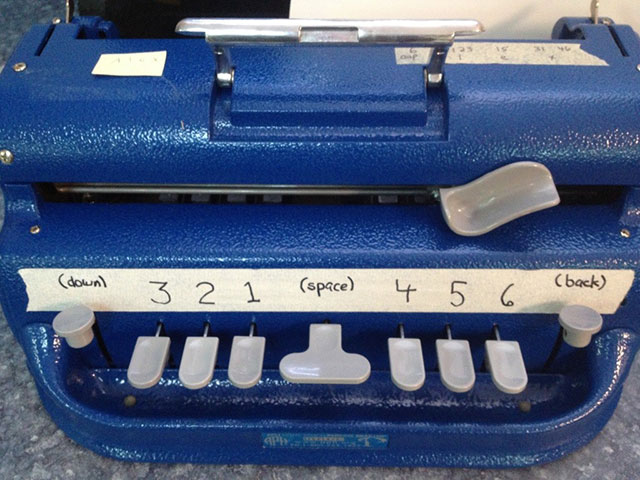
If a braille cell has more than one raised dot, each key on the braille writer must be held down at the same time to produce the correct braille cell.
For example, the letter “a” is just one raised dot, dot 1. You would simply press down dot number 1 on the braille writer and release. It automatically moves over to the next space. The letter “b” contains dots 1 and 2.
You must press down both dots at the same time to produce the letter b. The “down” button is like “enter” on a keyboard, it moves down to the next line.
How to Delete Braille
There is no delete button to erase mistakes in braille.

A small tool called a braille eraser can be used to push down incorrect dots. The “back” key can then be used to move back a space and braille the correct dots.
How to Read Braille
Braille readers typically read with the pad of their index fingers. They track each line from left to right with both hands feeling the patterns of dots that make up each letter or word.
Uncontracted vs. Contracted Braille
Beginning braille readers learn Grade 1 or Uncontracted Braille. Just like in the secret codes from above each individual letter is represented by a braille cell.
Grade 2, or Contracted Braille, is a short form code with combinations of letters and other short words given abbreviated braille patterns, called contractions.
Grade 1, Uncontracted Braille:

Grade 2, Contracted Braille:

Which sentence above do you think would be faster to read?
The contractions in grade 2 braille make reading and writing much faster. Grade 2 braille also takes up less space on a page.
There are 180 contractions, or “short cuts”, in contracted braille.
In the example above there are three types of contractions in the sentence, “I love you very much,” a whole-word contraction, short-form contraction, and a part-word contraction.
The word “very” is represented by the braille cell for the letter “v”. This is a whole-word contraction because one letter represents an entire word.
The word “much” is a short-form contraction because it is abbreviated to “mch”. It also contains a part-word contraction for “ch”. A unique braille cell represents the common letter blend for “ch” instead of brailling out the c and h separately.
In the United States, contracted braille is the standard for use on signs in public places and general reading media.
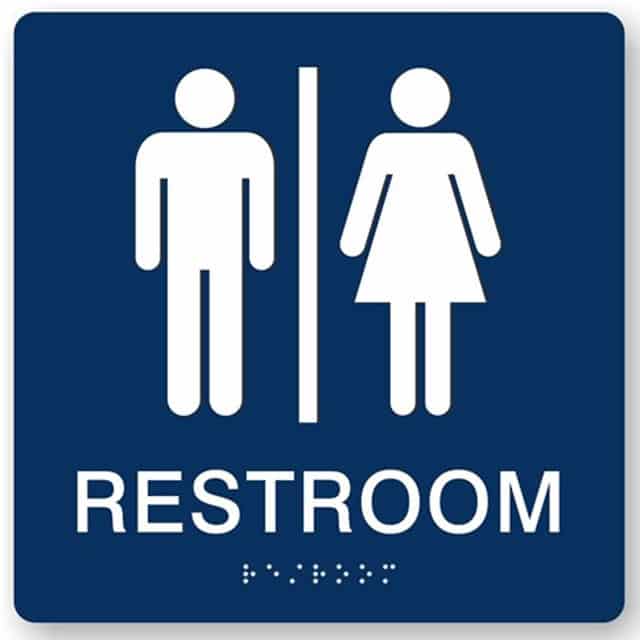
Want to learn more?
Here’s a video from one of our favorite YouTubers teaching you the basics of braille.
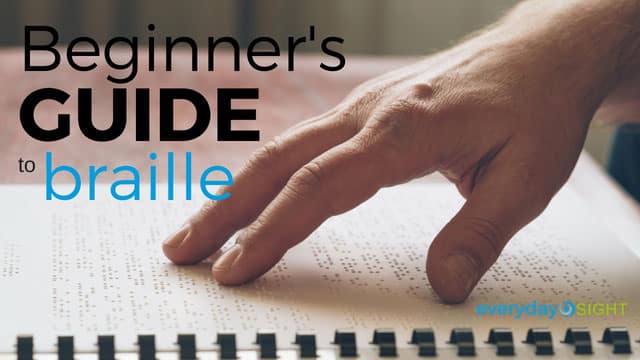

Although I am not yet blind, I am 72years if age and my eyesight is getting worse little by little. It has been in the last month that I have noticed my sight very, and I mean very, gradually getting worse. In the last few weeks even, My eyesight has gone from completely clear to somewhat blurry, which is hard to describe, but suffice it to say that I am sitting at my desk elbow length away, and these words are more than just slightly blurry. I wear trifocals, and the mid-range is perfect, so far. Likewise near and far range. BUT… Yes, there’s that BUT…
I really need the easiest and quickest way to learn Braille, and although probably know this already, that there is no easiest and quickest way to learn. HELP PLEASE!
Looking this up because I am blind and needed the help. Thanks